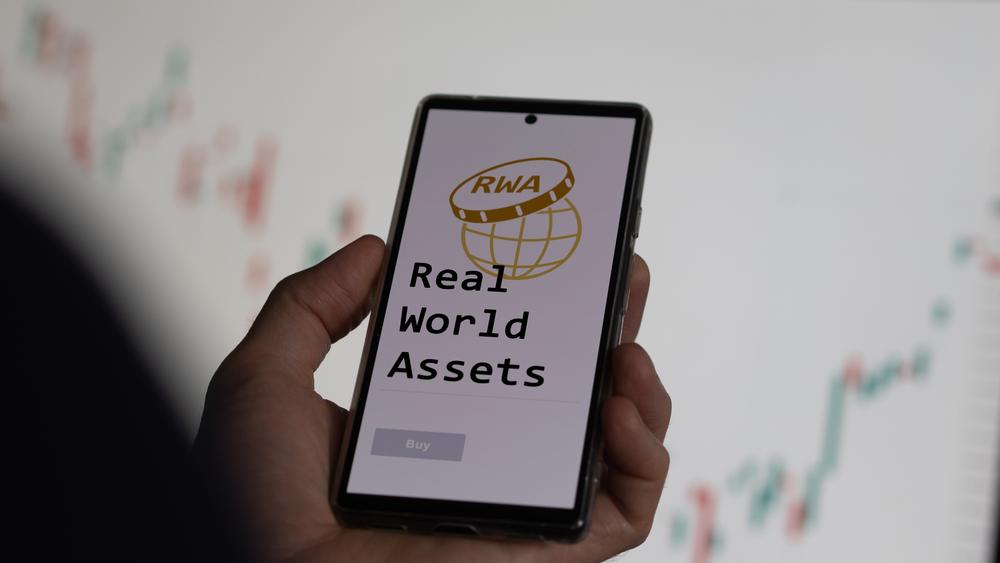Introducing Real World Asset Tokenization
The decentralized finance (DeFi) arena is rapidly progressing, and one standout trend is the tokenization of Real World Assets (RWAs). This innovative process transforms tangible assets—like real estate, gold, and US Treasuries—into digital tokens within the cryptocurrency sphere.
With DeFi’s rise and traditional yields experiencing a decline, RWA tokenization’s appeal has grown. It provides a diversification avenue and promises more stable yields, offering a buffer against crypto’s well-known volatility.
However, this financial innovation is not without risks and intricacies. It presents a range of opportunities and challenges, including enhanced liquidity and concerns about asset volatility.
The Process of Tokenizing Real World Assets
How does one convert a tangible asset, such as a piece of real estate, into a tradable digital token? Let’s break it down:
Choosing the Asset: Identify an asset suitable for tokenization—anything from luxury properties to high-yield bonds, with potential benefits from increased liquidity or fractional ownership.
Valuing the Asset: Ascertain the asset’s market value to ensure the tokens represent a fair share.
Setting the Legal Groundwork: This isn’t just a tech endeavor; it requires a robust legal framework to ensure token holders’ rights and regulatory compliance.
Minting the Tokens: Utilize blockchain platforms like Ethereum or Avalanche to create or “mint” digital tokens representing the asset’s fractions.
Bringing Tokens to Market: After minting, tokens become tradable cryptocurrencies, offering the sought-after liquidity of tokenization.
Ongoing Management: Despite their digital nature, real-world assets still need attention, from property maintenance to bond yield management.
Closing the Loop – Token Redemption: Ensure processes for token holders to redeem or liquidate their holdings.
Diverse Assets on the Blockchain
Tokenization is capturing wide-ranging interest due to its diverse applications:
Commodities: Hold the value of commodities, such as gold, digitally, removing the need for physical trades.
Real Estate: Tokenize vital documents like deeds to streamline property transactions.
Equity: Owning and influencing a business becomes seamless.
Gaming Assets: Monetize in-game achievements with tokenized assets.
Collectibles: Boost the tradability of collectibles, from figurines to stamps.
The Value of Tokenization
Tokenization’s value extends beyond its novelty. It promises:
Enhanced Liquidity: Swift, secure asset transactions with no intermediaries.
Broadened Investment Horizons: Merges traditional finance with the DeFi space.
Gateway to Global Markets: Trade without borders, tapping into global markets.
Examples of Tokenized Real-world Assets
Innovative strides in tokenization have been spearheaded by several financial institutions:
JPMorgan: Introduced the Tokenized Collateral Network (TCN) in October 2023, which transforms traditional assets into digital tokens. Their blockchain ventures include Quorum, Onyx Digital Assets Platform, and the JPM Coin. Furthermore, BlackRock leveraged JPMorgan’s infrastructure for a landmark tokenization initiative.
Franklin Templeton: Rolled out the Franklin OnChain U.S. Government Money Fund—a tokenized initiative holding over $309 million assets as of October 2023. Investors can access this fund using the Benji Investments app.
Citi: Launched Citi Token Services in September 2023, offering digital asset solutions that harness blockchain and smart contract tech for ‘always-on’ financial services.
ABN Amro: Became a pioneer in January 2023 by registering a digital bond on the Stellar blockchain for APOC, aiming to widen this service’s scope.
European Investment Bank (EIB): Collaborated with industry giants to issue a EUR 100m 2-year digital bond on blockchain in April 2021, promoting efficiency and transparency.
Mirae Asset Securities: Formed an alliance with Polygon Labs in September 2023 to spearhead financial tokenization and embrace web3 technologies.
Maximizing Benefits and Navigating Pitfalls
For investors keen on the tokenization trend, consider:
In-depth Analysis: Delve into tokenized assets, understanding market trends and local regulations.
Platform Integrity: Opt for reputable platforms with clear regulatory stances.
Diversification and Fluidity: Diversify across various tokenized assets for risk balance.
Strategic Investment: Consider the Dollar-Cost Averaging (DCA) method to combat market unpredictability.
Clear Exit Path: Establish your exit strategies and set realistic return goals.
However, the journey isn’t without challenges:
Regulatory Flux: Legal frameworks around tokenized assets can change.
Safeguarding Investments: Ensure robust protective measures against fraud and cyber threats.
Market Dynamics: Anticipate potential market swings and trading limitations.
Market Maturity & Ownership Nuances: Tokenizing can introduce complex ownership structures.
Specific Asset Risks & Technical Learning Curve: Different assets bring unique challenges, and the technology can be intricate.
Concluding Thoughts
Asset tokenization symbolizes the merging of traditional finance and crypto realms. While it offers a myriad of investment opportunities, thorough research and vigilance are essential. For those eager to explore, start by investigating projects that champion real-world asset tokenization.
